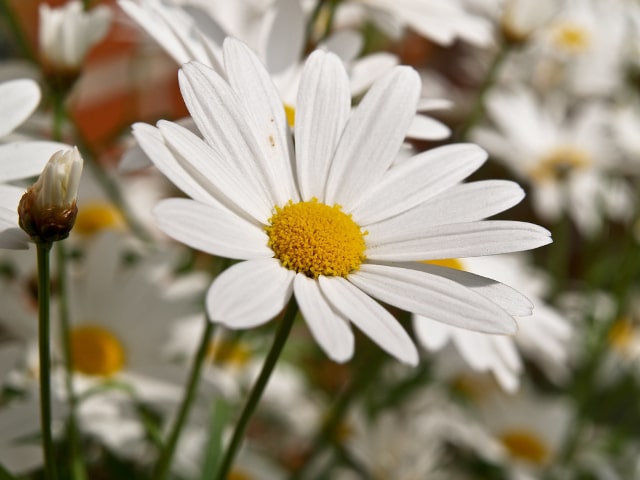
If you like Daisies but are looking for something a bit different for your garden, there are many plants you can try. These plants produce gorgeous Daisy-like flowers that add variety and something new to your garden. They are also a good choice if you can't grow Daisies in your garden.
Some of the most popular plants with Daisy-like flowers include:
German Chamomile (Matricaria recutita)
German Chamomile is a beautiful plant with Daisy-like flowers on spindly stems. It is important to remember that "Chamomile" is a name given to several species of plants, but German Chamomile is the only one with Daisy-like flowers.
German Chamomile is a perennial plant that is commonly used as an ingredient in herbal teas. If you wish to grow this plant in your home, it is best to plant seeds in the fall so you can enjoy gorgeous Daisy-like flowers in the next spring.
This plant will thrive in USDA growing zone 2 to 8. While a perennial, German Chamomile is typically grown as an annual plant. It requires full sun and soil that is well-drained, dry to medium-moisture. It produces beautiful Daisy-like flowers that are white with yellow centers.
The good news is that German Chamomile is an easy plant to grow. Just make sure to provide it with full sun and it will thrive. It doesn't require much, if any, maintenance. In fact, it can easily become an invasive species if you are not careful. German Chamomile can grow one to two feet in height and will self-seed in the garden unless flowers are deadheaded when they done blooming.
False Sunflower (Heliopsis helianthoides)
False Sunflowers is a tall plant that is covered in yellow-orange flowers that resemble Daisies. The plants can grow 3 to 6 feet in height, so they are ideal for those who have a lot of space in their garden.
False Sunflower will do great in warm, southern climates where they can receive full sun. They can thrive in USDA growing zones 3 to 9. This plant is a great choice for those that have poor soil in their garden. False Sunflower can tolerate drought, although they will bloom better when they are given regular moisture. Also, they prefer well-drained soil, so this is something to keep in mind if you wish to grow these plants in your garden.
It is possible to grow False Sunflower in shady conditions, but keep in mind that the flower stalks will need additional support. It is best for them to be staked so they don't lose shape and they can enjoy full support.
False Sunflower is a perennial plant that produces Daisy-like orange and yellow flowers around brown center disks. These plants typically flower from June to August. They are closely related to true Sunflowers, but there are a few notable differences. For example, true Sunflowers are annual plants. Also, False Sunflower has smaller and more profuse flowers.
Pot Marigold (Calendula officinalis)
Pot Marigold is a beautiful plant that is known for its colorful, full flower heads that have a Daisy-like shape. It also has full, almost bushy petals. These plants typically grow one to two feet in height. There are many cultivars available, so you can choose flower colors and shapes that you like the most.
Pot Marigold is an excellent companion plant that also has numerous other uses: it helps with natural pest control by drawing beneficial insects, and it is a known medicinal plant. It is important to remember that Pot Marigold is not the same as a common garden Marigold, which belongs to Tagetes genus.
If you wish to grow Pot Marigold, make sure to deadhead them after spring flowering. This will ensure an extra-long blooming time. Pot Marigold is a plant that thrives in warmer zones: it is ideal for USDA growing zones 8 to 11. It is typically grown as an annual plant. It will readily self-seeds in all zones, unless the flowers are deadheaded after blooming. This plant requires full sun to partial shade and rich, well-drained soil.
For an extra-long blooming time, be sure to deadhead them after spring flowering. This is a short-lived perennial in warmer zones, but it readily self-seeds in all zones unless flowers are deadheaded after blooming. Many different cultivars are available, offering a variety of bloom colors and shapes
Asters (Aster Spp.)
Asters are varied plants: the genus contains several species. However, only some are commonly used in landscaping. Those are typically hybrid crosses or cultivars. Perhaps that most popular variety is Aster Celeste. This plant is known for its purple, Daisy-like flowers. Aster Celeste forms a clump that is covered in dense flowers during the summer and early fall.
This Aster variety grows to about 30 inches in height, but other Aster varieties can be much shorter (around 8 inches) or taller (up to 8 feet). If you choose to grow taller varieties, make sure to pinch them back in mid-summer. This will keep the plant bushy and full.
All Asters bloom late, so they provide color for your garden during late summer and throughout the fall. This makes them an excellent choice, because you can enjoy flowers even when most other perennials are no longer blooming.
Asters can thrive in USDA growing zones 3 to 8. They thrive in the full sun and require medium-moisture, well-drained soil.
Blanket Flower (Gaillardia x Grandiflora)
Blanked Flower is famous for its Daisy-like blooms. It got its name due to its thick covering of flowers. There are many plants in the Gaillardia genus that are native to North America. Depending on the species, these can be annual or perennial plants. Varieties sold for home gardening are typically cultivars of a specific hybrid, known as G. x Grandiflora.
Blanket Flower is generally easy to grow, as long as you find an appropriate location. It can thrive in USDA growing zones 3 to 10. It will do well in full sun, and it requires medium-moisture, well-drained soil.
This is a short-lived perennial, but it self-seeds easily and it can quickly colonize the garden. It is a good choice for those who wish to have a Daisy-like flower in their garden.
Photo credit: Peter Rosbjerg
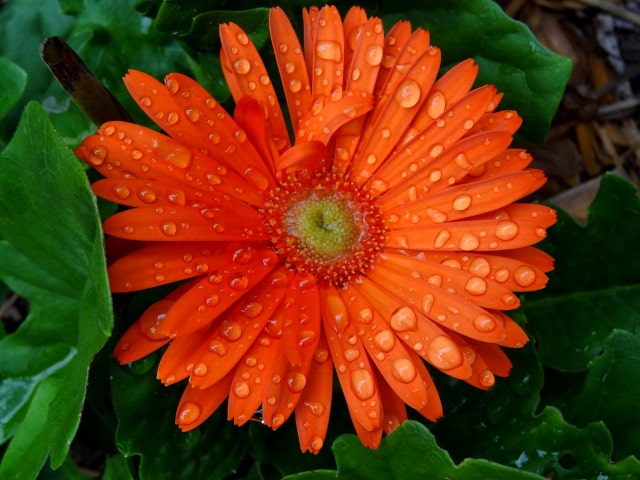
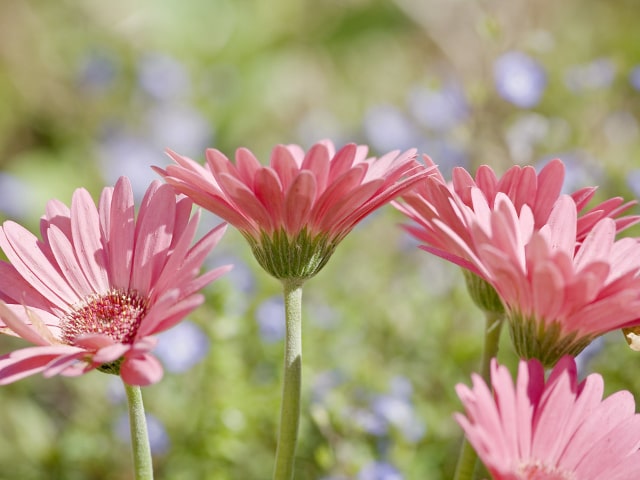
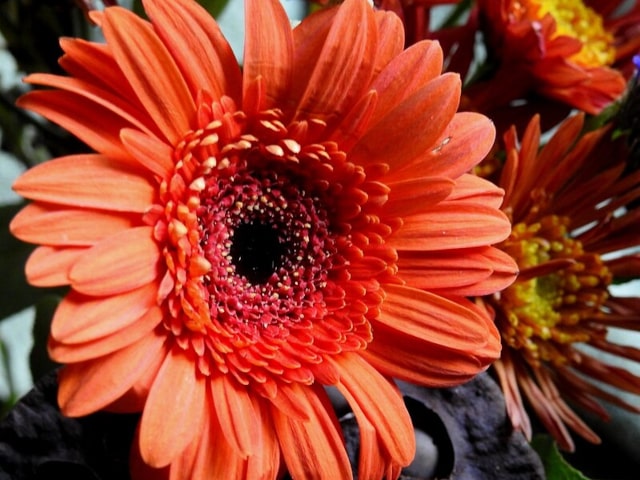
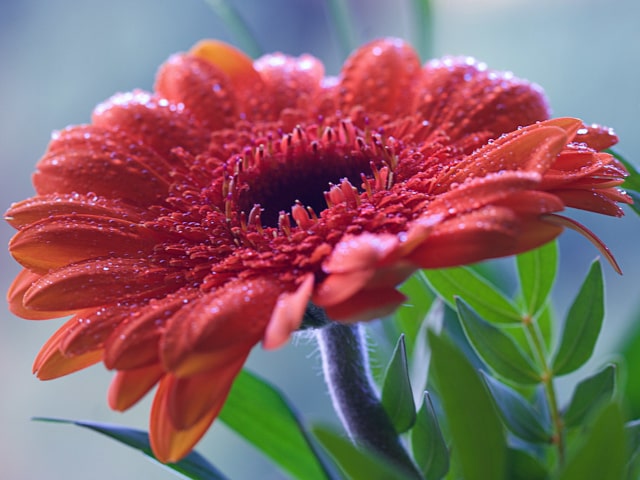
0 Comments